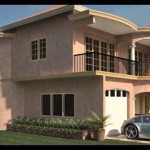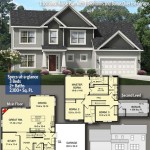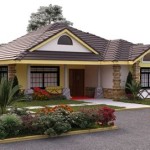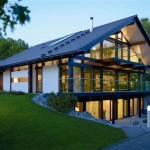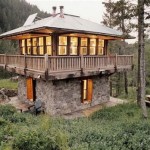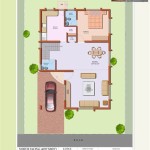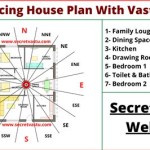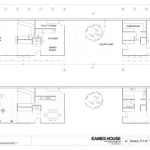House Plans: Exploring Kitchen Placement at the Front and Back
The arrangement of rooms within a house significantly impacts its functionality, aesthetics, and overall living experience. The kitchen, as a central hub for culinary activities and social interaction, holds particular importance in this arrangement. Traditional house plans often position the kitchen towards the back of the house, while contemporary designs are increasingly exploring the concept of a front-facing kitchen. Both approaches offer unique advantages and disadvantages, catering to different lifestyle preferences and site conditions.
This article will delve into the considerations involved in house plans that feature the kitchen either at the front or the back of the house, examining the potential benefits and drawbacks of each arrangement. It will also explore the factors that influence the decision-making process when determining the optimal kitchen placement.
Kitchen at the Back: The Traditional Approach
Positioning the kitchen at the back of the house is a long-standing architectural convention. This arrangement is often favored for several reasons, rooted in historical context and practical considerations.
Historically, kitchens were often relegated to the rear of the house due to the perceived mess, noise, and odors associated with cooking. Separating the kitchen from the more formal living areas allowed for a cleaner, more presentable façade and interior. This separation also provided a degree of privacy for household staff who were typically responsible for food preparation.
From a functional standpoint, placing the kitchen at the back often facilitates direct access to the backyard or garden. This connection is particularly beneficial for outdoor dining and entertaining, allowing for easy transfer of food and beverages. It also simplifies tasks like grilling or harvesting herbs and vegetables from a garden. Deliveries, especially groceries, can often be easily accommodated through a back entrance, minimizing disruption to the front of the house.
Furthermore, a rear-facing kitchen can be effectively screened from street views, enhancing privacy and reducing visual clutter. This can be particularly important in densely populated areas or on busy streets. Natural light, while still important, can be managed with more flexibility in a back kitchen, as the orientation might not always be ideal for morning sunlight. Artificial lighting can be used to compensate, and the focus can shift to controlling afternoon glare rather than maximizing morning sun.
However, placing the kitchen exclusively at the back of the house can present certain challenges. It may isolate the cook from other household activities, particularly if the living areas are located at the front. This isolation can be less than ideal for individuals who enjoy socializing while cooking or who need to supervise children playing in other areas of the house. A solely back-positioned kitchen might also require longer walks to the front door for greeting guests or retrieving deliveries.
Kitchen at the Front: A Modern Perspective
Placing the kitchen towards the front of the house represents a departure from traditional norms, reflecting evolving lifestyles and design preferences. This approach often prioritizes social interaction, natural light, and a connection to the surrounding neighborhood.
One of the primary benefits of a front-facing kitchen is its enhanced connection to the street and surrounding environment. This can be particularly appealing for individuals who enjoy being part of their community and observing neighbourhood activity. A front-facing kitchen can also benefit from abundant natural light, especially if oriented east or south. This natural light can create a bright and cheerful atmosphere, enhancing the overall living experience. Furthermore, a well-designed front kitchen can serve as a welcoming focal point for the house, creating a sense of openness and hospitality.
The social aspect of a front kitchen cannot be overstated. It allows the cook to engage with family members or guests who are entering or passing through the house. This is especially valuable for households with young children, as it allows for easier supervision while preparing meals. The kitchen can become a hub for informal gatherings and conversations, fostering a sense of community within the home.
Modern design solutions can mitigate potential drawbacks of a front kitchen, such as noise and privacy concerns. Soundproofing materials and strategic landscaping can help to buffer street noise and create a more peaceful environment. Window treatments, such as blinds or curtains, can provide privacy and control the amount of natural light entering the space. Careful planning of the kitchen layout, including the placement of appliances and workstations, can also contribute to a more efficient and enjoyable cooking experience.
However, a front-facing kitchen is not without potential downsides. Traffic noise can be a significant issue, particularly in busy urban areas. Maintaining cleanliness and order is also more crucial when the kitchen is visible from the street. Furthermore, security may be a concern, requiring measures such as reinforced windows and doors to deter intruders.
Factors Influencing Kitchen Placement
The optimal placement of the kitchen – at the front or back of the house – depends on a variety of factors, including site conditions, lifestyle preferences, and design considerations. A thorough assessment of these factors is essential for making an informed decision.
Site Orientation: The orientation of the building lot plays a crucial role in determining the best location for the kitchen. A south-facing kitchen will receive ample sunlight throughout the day, while a north-facing kitchen may require additional lighting. Exposure to prevailing winds and potential views should also be taken into account. In particularly windy areas, a back kitchen might be shielded from drafts, while a front kitchen could require windbreaks.
Lifestyle Preferences: An individual's lifestyle and daily routines are paramount. A family that enjoys outdoor entertaining may prefer a kitchen with direct access to the backyard. Conversely, a person who values privacy and tranquility may opt for a kitchen tucked away at the back of the house. Individuals who work from home might prefer a front kitchen close to the front door for quick access to deliveries and guests while maintaining separation from workspaces.
Design Constraints: The overall design of the house also influences kitchen placement. Architectural style, lot size, and building codes can all impose constraints on the layout. Open-plan designs often incorporate the kitchen into the main living area, blurring the lines between the front and back of the house. Smaller lots may necessitate a more compact kitchen design, while larger lots may allow for more flexibility in kitchen placement. Existing plumbing and electrical infrastructure can also impact the cost and feasibility of relocating the kitchen.
Privacy and Security: The level of privacy and security desired by the homeowner is a key consideration. A front kitchen may require additional security measures, such as reinforced windows and doors. Landscaping can also be used to create a buffer between the kitchen and the street, enhancing privacy. Alternatively, a back kitchen offers inherent privacy, especially if shielded by landscaping or fencing.
Noise Levels: The amount of noise generated by street traffic or neighborhood activity needs to be considered. A front kitchen may be exposed to higher noise levels, requiring noise-reducing materials and design features. A back kitchen, especially if buffered by other rooms, may offer a quieter environment. The internal noise generated by appliances and cooking activities should also be considered when determining proximity to bedrooms or living areas.
Ultimately, the decision of whether to place the kitchen at the front or back of the house is a personal one, based on a careful evaluation of these factors. There is no universally "right" or "wrong" answer, as the optimal solution will vary depending on individual circumstances and priorities.

14x24 House 1 Bedroom 5 Bath 597 Sq Ft Floor Plan Instant Model 1a

Oak Cove Country Home Plan 040d 0029 House Plans And More

Plan Dr 22393 2 3 Bed European House With Home Office

Traditional Style House Plan 3 Beds 2 Baths 2000 Sq Ft 126 277 Dreamhomesource Com

Traditional Style House Plan 3 Beds 2 5 Baths 2283 Sq Ft 52 261 Dreamhomesource Com

House Plan 76820 Tudor Style With 1374 Sq Ft 3 Bed 1 Bath

Plan 100323ghr Modern Adu With 2 Bedrooms 960 Square Feet

Traditional Style House Plan 2 Beds 1 5 Baths 1890 Sq Ft 21 296 Houseplans Com
Ranch Style House Plan 4 Beds 3 Baths 1596 Sq Ft 20 2313 Dreamhomesource Com

4 Bedroom House Plan 211 M2 2270 Sq Foot N Concept Home Plans For On Stumps And Timber Floor Steep Slope Design

